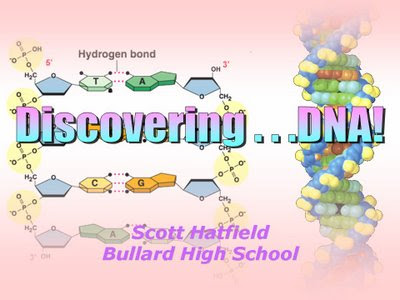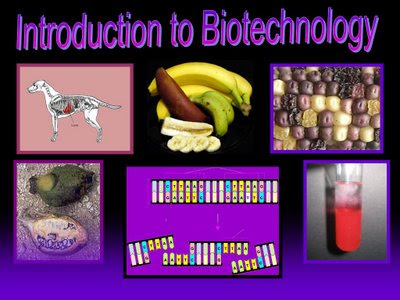Both the morning and the afternoon sessions (1st and 2nd period) will have a Project based on this video. The classes will watch the video in its entirety during class on Wednesday, then be given a Study Guide with questions to complete for each section of the video. Answers must be in complete sentence! To help students unpack the big ideas in the video, there is an entire PBS-sponsored web site to accompany this program.
Students who wish to review this video further will find it available free online, in two segments from Google Video. You can watch it embedded below or follow the links to Google.
Segment 1:
Segment 2:
Monday, July 20, 2009
POWER POINTS FOR FINAL SESSIONS
The Power Point Lecture Notes on 'Deep Time' are available



A PDF of the Lecture Guide based upon those notes can be downloaded here.
The Power Point Lecture Notes on 'Deep Time' are available here.

Here's the Lecture Notes.
The title, incidentally, is taken from the Daniel Dennett book which also inspired a two-hour episode of the NOVA 'Evolution' series. We will end up seeing the whole thing in class on Wednesday. Here's a link to view the whole thing on-line, here.
Tuesday, July 14, 2009
POWER POINT: DISCOVERING DNA!

These notes were given Monday through Wednesday in the first (morning) session. These Power Point notes are available for download here.
POWER POINT: DIVERSITY AND CLASSIFICATION
EXTINCTION!
EXTINCTION
This video was shown in Monday's class: 'Extinction!' is Episode 3 from NOVA's 'Evolution' series (2001). There is a worksheet based upon the video given in class, which I summarize below:
"The video begins with paleontologist Peter Ward hunting for Permian fossils in South Africa's Karoo Desert, and relates ecological pyramids (which are like a 'house of cards') to mass extinctions, which are believed to be rare but important events in the history of life. It then follows the work of American Museum of Natural History researcher Michael Novacek in building the fossil record of small, shrew-like mammals from the Mesozoic, representative of the lineage that will survive the next mass extinction (the K/T event), which will claim the dinosaurs. It concludes with an examination of the role of human activity in accelerating the rate of extinction, with important attention to conservationists like Alan Rabinowitz."
I do not have enough class time to review this with students again, but students who need to review it can either go to Google Video, or watching it embedded here:
EXTINCTION
This video was shown in Monday's class: 'Extinction!' is Episode 3 from NOVA's 'Evolution' series (2001). There is a worksheet based upon the video given in class, which I summarize below:
"The video begins with paleontologist Peter Ward hunting for Permian fossils in South Africa's Karoo Desert, and relates ecological pyramids (which are like a 'house of cards') to mass extinctions, which are believed to be rare but important events in the history of life. It then follows the work of American Museum of Natural History researcher Michael Novacek in building the fossil record of small, shrew-like mammals from the Mesozoic, representative of the lineage that will survive the next mass extinction (the K/T event), which will claim the dinosaurs. It concludes with an examination of the role of human activity in accelerating the rate of extinction, with important attention to conservationists like Alan Rabinowitz."
I do not have enough class time to review this with students again, but students who need to review it can either go to Google Video, or watching it embedded here:
EXTINCTION
Thursday, July 9, 2009
POWER POINT: BIOTECHNOLOGY

Here is the final set of Power Point notes for the second (afternoon) session of Summer School's 2nd unit, 'Introduction to Biotechnology". Students will learn about selective breeding, gel electrophoresis, PCR, gene sequencing, DNA fingerprinting, restriction enzymes, the Human Genome Project and other such things. Remember, your 2nd test is on Monday, July 13th!
POWER POINTS ON CELLULAR ENERGETICS
There are three Power Points in sequence here for the 1st (morning session) of Summer School:
Photosynthesis, Part 1 and Part 2, as well as "Cellular Respiration". Students were given a Lecture Guide based on the first one only. It's a shame, but in a summer session we have to cram a lot of information in short bursts, and this is one of the especially tight squeezes. Anyway, click on the images below for the notes.....
Photosynthesis, Part 1: This Power Point contains an outline of photosynthesis, relating it to the 'Great Circle' of chemical reactions that all living things participate it (autotrophs and heterotrophs!), reactions which recycle the raw materials that life requires.

Photosynthesis, Part 2: This Power Point provides much more detail about the light reactions, photosystems, the proton pumps that use the enzyme ATP synthase, the electron transport chains that help power those pumps. There is less detail about the 'dark reactions' of the Calvin cycle and other material which is not explicitly part of the state standards.

Cellular Respiration: This Power Point contains information about cellular respiration, including glycolysis (which takes place in the cytoplasm) and the Krebs Cycle (which takes place in the matrix of the mitochondria). The electrons produced in the Krebs Cycle move through the inner membrane, or cristae, of the mitochondria. The motion of these negatively-charged particles attracts protons (H+), and eventually a high concentration of protons within the membrane is available to drive 'proton pumps' that power an enzyme, ATP synthase, leading to the production of more ATP:
Photosynthesis, Part 1 and Part 2, as well as "Cellular Respiration". Students were given a Lecture Guide based on the first one only. It's a shame, but in a summer session we have to cram a lot of information in short bursts, and this is one of the especially tight squeezes. Anyway, click on the images below for the notes.....
Photosynthesis, Part 1: This Power Point contains an outline of photosynthesis, relating it to the 'Great Circle' of chemical reactions that all living things participate it (autotrophs and heterotrophs!), reactions which recycle the raw materials that life requires.

Photosynthesis, Part 2: This Power Point provides much more detail about the light reactions, photosystems, the proton pumps that use the enzyme ATP synthase, the electron transport chains that help power those pumps. There is less detail about the 'dark reactions' of the Calvin cycle and other material which is not explicitly part of the state standards.

You can download the actual Power Point here.
Monday, July 6, 2009
POWER POINT: HUMAN HEREDITY
POWER POINT: HUMAN HEREDITY
These are the notes for the second-semester (afternoon) session.

There WILL be a Lecture Guide based upon these notes, and students should use these Power Points to complete their Cornell style notes in their composition books, and to refine their responses to the Lecture Guide. This material will be on their Unit 2 test on Monday, July 13th.
POWER POINT: HUMAN HEREDITY
These are the notes for the second-semester (afternoon) session.

There WILL be a Lecture Guide based upon these notes, and students should use these Power Points to complete their Cornell style notes in their composition books, and to refine their responses to the Lecture Guide. This material will be on their Unit 2 test on Monday, July 13th.
POWER POINT: HUMAN HEREDITY
POWER POINT: THE FLUID MOSAIC MODEL OF THE CELL MEMBRANE
These are notes for the first-semester (morning) session. There is no Lecture Guide for this particular section of notes, but this material will be covered on the second Unit Test on Monday, July 13th.

POWER POINT: THE FLUID MOSAIC MODEL OF THE CELL MEMBRANE
"CRACKING THE CODE OF LIFE!"
"CRACKING THE CODE OF LIFE!"
The video viewed in class, and thus the handout based on it, can be viewed on-line here:

There is an entire PBS-sponsored web site to accompany this program. It's truly excellent, and since I can't show the entire program within the confines of a short summer session, making the whole thing available on-line is a definite plus.
"CRACKING THE CODE OF LIFE!"
The video viewed in class, and thus the handout based on it, can be viewed on-line here:

There is an entire PBS-sponsored web site to accompany this program. It's truly excellent, and since I can't show the entire program within the confines of a short summer session, making the whole thing available on-line is a definite plus.
"CRACKING THE CODE OF LIFE!"
Thursday, July 2, 2009
POWER POINT: 'MUTATIONS!"
Here is the Power Point containing notes for the second (afternoon) session of Summer School, on 'Mutations'. Students received a Lecture Guide based on these notes in yesterday's class, and they can use this Power Point to refine their responses.


POWER POINT: 'CELLS AND THEIR ORGANELLES'
Here's the Power Point for the first (morning) session of Summer School, on cells and their organelles. Students received a Lecture Guide in class based on these notes and can use this Power Point to refine their responses.


Subscribe to:
Comments (Atom)

